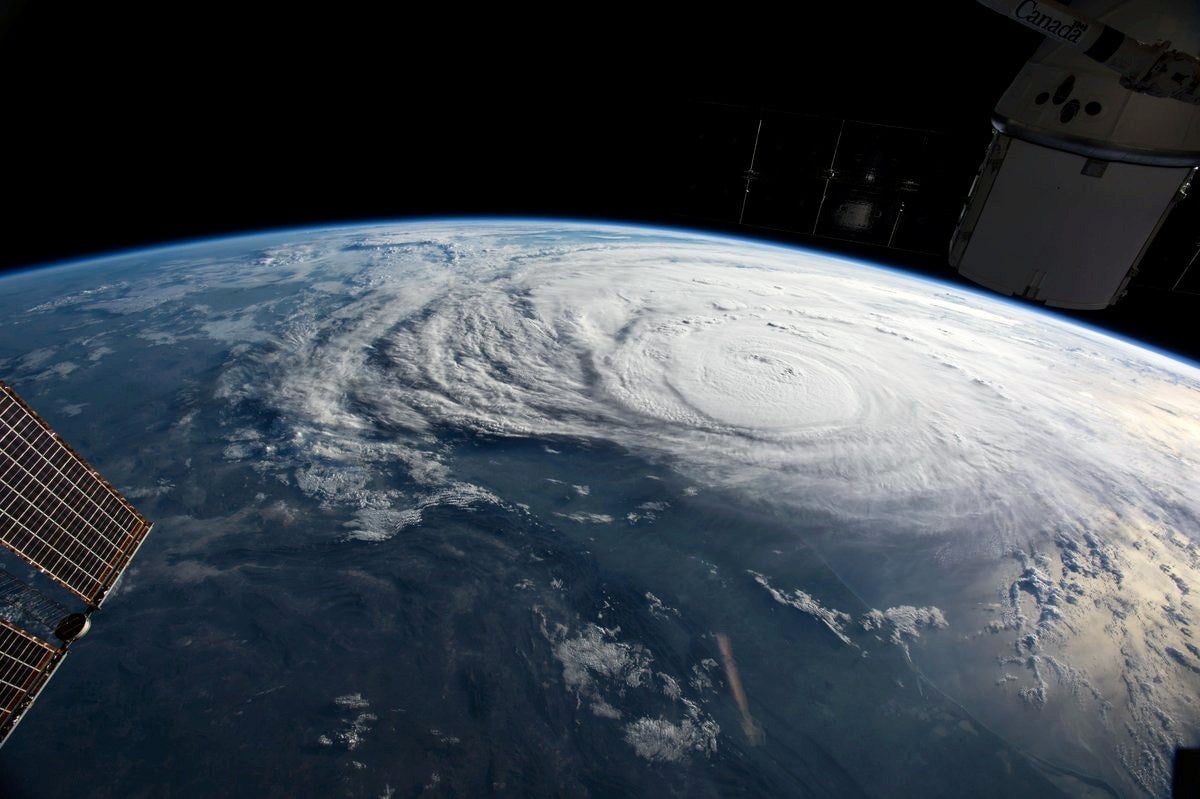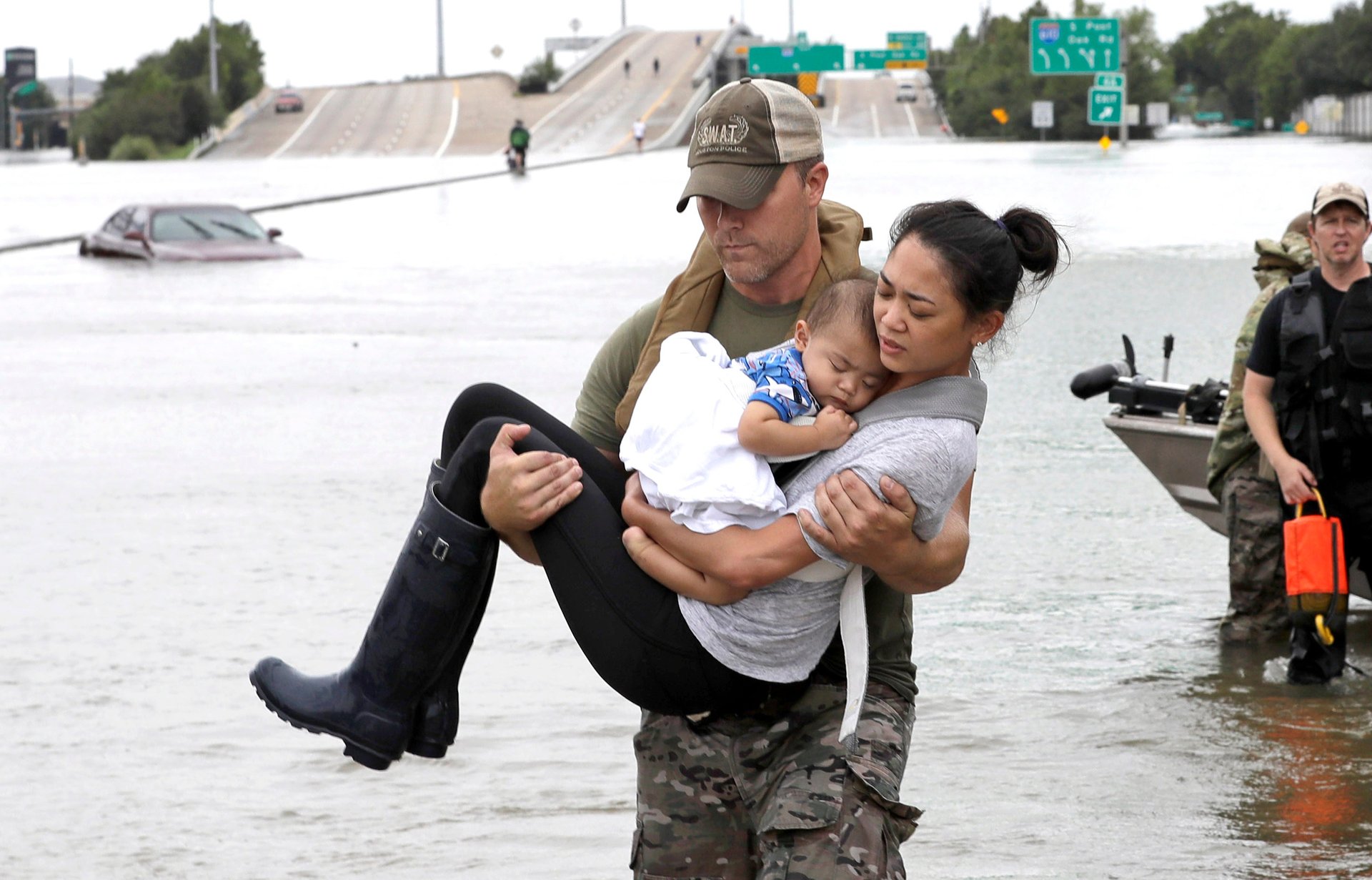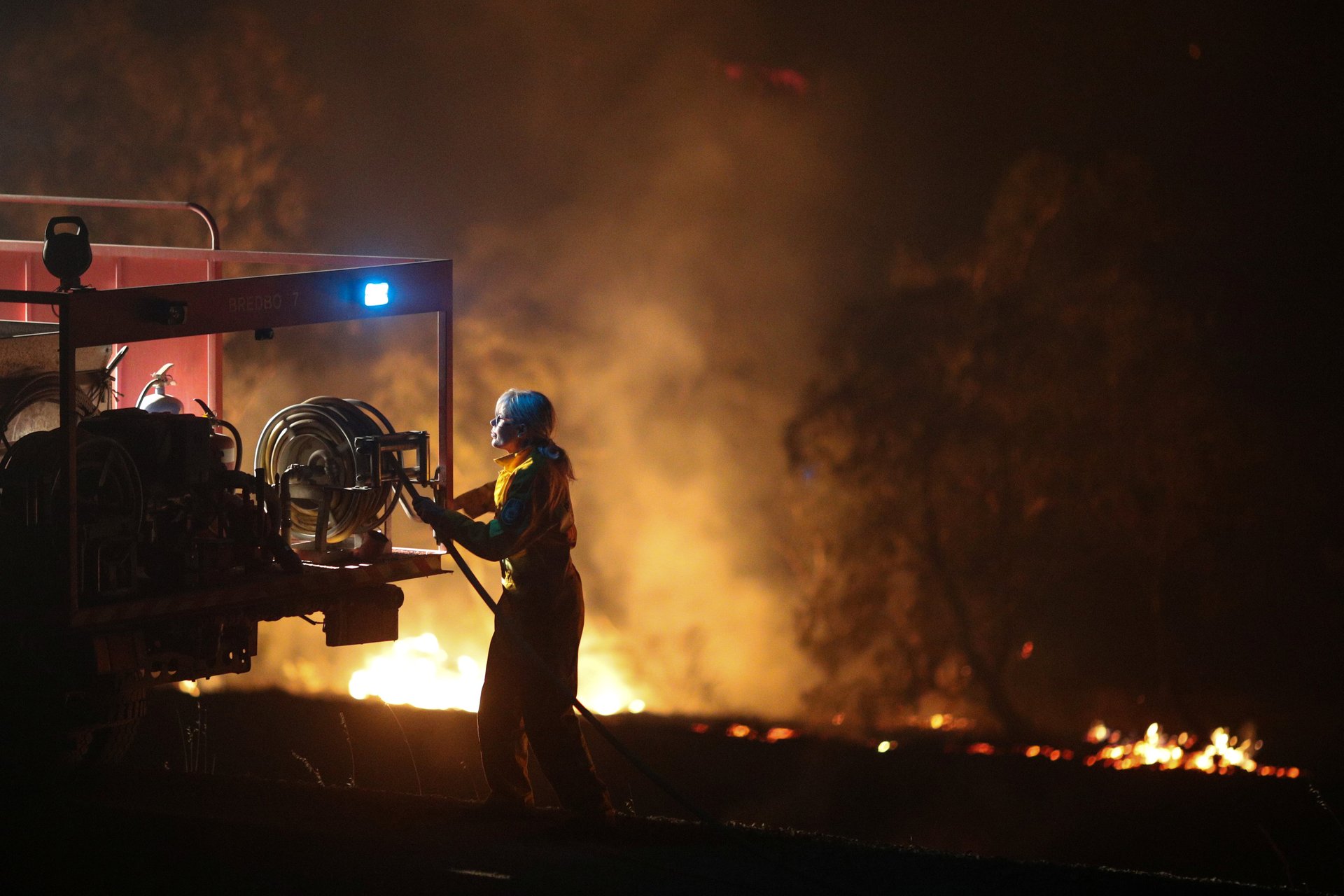Central bankers are preparing for the catastrophic cost of climate change
Climate change is a unique economic problem with catastrophic consequences, the worst of which are still far away. It’s a “tragedy of the horizon,” as Mark Carney, Bank of England governor, memorably dubbed it.


Climate change is a unique economic problem with catastrophic consequences, the worst of which are still far away. It’s a “tragedy of the horizon,” as Mark Carney, Bank of England governor, memorably dubbed it.
Views about the urgency of the situation differ. However, scientific advances in “attribution,” along with increasingly rich data from insurers, make it clear that the economic toll is already coming due. Since the 1980s, the annual total of costly weather-related disasters has doubled, while estimated losses have jumped from an annual average of $30 billion in the 1980s to $110 billion over the last decade (both amounts in 2018 dollars), according to data from Munich Re, the reinsurance giant. (Although the trend is less pronounced when accounting for increasing economic development over the last 40 years, the frequency of ultra-costly years has risen.)
What’s distinctive about the danger posed by climate change is how it alters the system itself. (The “system” being, you know, the Earth.) As temperatures rise, the destructive wallop of bad weather is likely to increase, upping the chances of events of catastrophic intensity.
Central bankers are increasingly worried about the toll climate change will take on the economy—including as a cause of recessions. Even now, an event severe enough to induce a full-blown recession in an advanced economy isn’t unthinkable. Just take stock of the economic waste laid by climate-related weather in recent years.
Residents of North America might recall the four-week stretch of early autumn 2017, when hurricanes Harvey, Irma, and Maria devastated coastal cities along the Atlantic. The flooding and storm surges caused by the trio of storms killed 3,235 people and left $276 billion in losses in its wake, according to US government data (and possibly as high as $360 billion).

These storms would probably have formed without any help from warming temperatures—and, in general, you can’t chalk up individual events to climate change. But the way hotter temperatures change conditions leads to a rising likelihood of super-intense storms. Economists Martin L. Weitzman and Gernot Wagner, in their 2015 book, Climate Shock, offer a helpful analogy: The effects of climate change on natural disasters are sort of like doping’s effects on athletic performance. “No single Barry Bonds home run or Lance Armstrong Tour de France stage win can be attributed to doping, nor did doping act alone. Bonds still had to hit the ball, and Armstrong still had to pedal,” they wrote. “But doping surely helped them hit farther and bike faster.”
Hurricanes (also known as tropical cyclones in the Indian and South Pacific, and, in the northwest Pacific, typhoons) were already the most economically destructive type of weather-related disaster. And as science makes increasingly clear, warming of the planet’s sea and air alters weather patterns by feeding climatic interactions that boost their “performance.” Tropical cyclones are fueled by evaporating sea-surface waters that linger in the atmosphere. Hotter temperatures accelerate evaporation and trap more moisture in the air, upping both the frequency and intensity of such storms. That will translate to a growing likelihood of super-intense storms that travel in packs.
Plus, because tropical storms tend to form in clusters, the factors that create one super-intense hurricane are also liable to unleash a second and even a third. As a result, 2017 was but “a foretaste of the future,” cautions Munich Re, the reinsurance giant. “Indeed, we suspect that the future projections of increased numbers of extreme storms may materialize in terms of a higher frequency of exceptional seasons such as 2004 [when hurricanes Charley, Ivan, and Jeanne hit], 2005 [the year of hurricanes Katrina, Wilma, and Rita] and 2017.”
One particularly destructive aspect of climate change is Biblical-scale rains that increasingly accompany tropical cyclones.
The flooding during Harvey’s assault on Houston is a prime example. Another is Hagibis, which deluged Japan’s Pacific coast in October of 2019. In some areas, the volume of rain that fell in 48 hours equaled 40% of the typical annual total. Some 13,000 houses were inundated—including, in some areas, the entire first story—while another 900 were destroyed. More than 70 people were killed. Losses from Hagibis are estimated at $17 billion. (Thanks to Hagibis and Faxai, a typhoon that battered the Tokyo area in September of that year, Japan sustained record-breaking cyclone losses in 2019).
Epic storms are probably the most dramatic and familiar form of extreme weather. But since climate change has so many different channels—from drought to floods, from wildfires to heatwaves—its potential to hit GDP is also broad and varied. Looking at US data, all sorts of extreme weather events and natural disasters costing more than $1 billion (in 2019 dollars) have become more frequent (except freezes). Take 2017 for example. Shortly after Harvey and Irma laid waste to Florida and Texas, the biggest fire in Los Angeles’ history ravaged the city.
Not all of this destruction is captured directly in GDP, obviously. In poorer countries, natural disasters tend to exact a grave humanitarian toll in addition to the economic impact. In 2008, cyclone Nargis wreaked havoc on Myanmar when it propelled a storm surge 40 kilometers up the Irrawaddy delta. Damage totaled $12 billion. At least 138,000 were killed.
Rich countries aren’t immune to climate change-related deaths. Heatwaves tend to get less attention, perhaps because they cause less property damage than storms, but the hit to humanity from extreme heat often surpasses that of huge storms and floods in a given year.
In 2003, a notorious heatwave killed an estimated 70,000 Europeans, including almost 15,000 people in France alone. (It resulted in $17.3 billion in losses, in 2018 dollars, according to Munich Re.) These types of events are not only becoming more deadly, but more frequent.
In the US, for example, the average number of heatwaves in 50 big US cities is three times what it was in the 1960s. In France, extreme heat has been linked to between 500 and 3,500 extra deaths each summer since 2015. In the Netherlands, more than 300 additional people died in a three-week period in 2018. The same thing happened again in 2019, during which 400 more people died than usual—in a single week. Then in August, another spike in temperatures hospitalized 18,000 in Japan in just a week.
Of course, death and sickness bring economic costs, through loss of human resources and declining labor productivity, though these are hard to quantify.
The ripple effects of climate shocks
When a natural disaster hits, it can hurt the economy by dousing business activity, leveling buildings and infrastructure, displacing masses of people, and disrupting the business networks that keep stores stocked and trade flowing. One possible channel of economic impact is demand, as wealth is wiped out and businesses and consumers pull back on spending, ultimately denting output. Weather disasters in one place can be felt more broadly by gumming up global supply chains or inducing protectionist measures to shore up food supply.
But supply shocks are likely, too. Evacuations and high fatalities from a natural disaster might disrupt labor supply, for example. Cargo is often lost in severe storms. And then there are potential shocks to prices of energy and food.
If that sounds alarmist, it might be because global food prices have been eerily stable since 2011. In a recent report, Nomura analysts argue the risk of a global food price shock is underappreciated—and the increasing frequency of extreme weather events is a big reason why. “Statistically, the world is overdue for a climate change-induced food supply shock,” they write. “Once triggered, higher food prices could be amplified by protectionist agricultural trade policies, increased speculation and hoarding by investors, and dangerously high (and hidden) debt in frontier economies.”
Exacerbating the potential impact is how climate change-related weather patterns might stymie the traditional economic management policy tools. Guy Debelle, vice governor of the Reserve Bank of Australia, pointed to the 2011’s cyclone Yasi, which wiped out the banana crop that year. Skyrocketing banana prices fed into inflation. However, the RBA “looked through” the banana-based price rise, confident that it was only temporary. The bananas would grow back. And grow back, soon, they did.
Climate change, however, upsets that certainty. “The recent IPCC report documents that climate change is a trend rather than cyclical, which makes the assessment much more complicated,” said Debelle. “What if droughts are more frequent, or cyclones happen more often? The supply shock is no longer temporary but close to permanent. That situation is more challenging to assess and respond to.”
For example, a severe weather disturbance might affect the economy in a way similar to an oil price spike, explained Sandra Batten of the BoE in a presentation last November at the Federal Reserve Bank of San Francisco. If the catastrophe wipes out factories and infrastructure, and massively displaces workers, the hit to supply could drive up inflation. Central bankers will face a dilemma: Raising rates might keep prices from spiraling, but it would risk quelling economic activity needed to speed the post-crisis recovery.
The growing risk of “green swans”
It’s also not hard to imagine how a natural disaster might generate financial aftershocks—tanking capital markets, bankruptcies on residential and corporate loans, underwriting losses to insurers. Some 40% of the world’s biggest companies have sites that face a high risk from extreme weather and other physical impacts of climate change, according to recent analysis by S&P Global. Among US companies, the share is nearly 60%.

In fact, the potential risk climate change poses to both economic and financial stability is a topic of increasing priority among central bankers. Under Carney, the Bank of England has led the research push, having churned out a series of studies on climate change in the last few years. Last year, the Federal Reserve had its first climate change-focused conference. The Bank for International Settlements—a Switzerland-based organization that is sometimes called the central bank for central banks—has also stepped up its investigations on the subject, including the release of The Green Swan, an e-book on risks to the financial system and monetary policy posed by climate change, which it published in conjunction with Banque De France earlier this month.
How exactly might that play out? By hobbling growth and causing credit conditions to tighten, the financial impact could still worsen overall economic damage by slowing the recovery. Still, it would conceivably take something truly cataclysmic to trigger a full-blown financial crisis. That said, a potential source of financial upheaval is a sudden “repricing” of assets—what Carney called a “Minsky moment,” referring to a sudden collapse in asset prices that marks the onset of a crash. In the environmental sense, such a reversal might happen if investors realize that climate change has reduced the underlying value of coastal real estate, stocks and bonds, or other assets.
The cost of adapting
Natural disasters are one obvious catalyst. But another possibility is what economists call “transition” costs—the losses and disruptions caused by a shift toward new energy sources, and away from fossil fuels. “On top of [other] costs, climate adaptation—with spending on equipment such as air conditioners and resilient infrastructure including seawalls and fortified transportation systems—is expected to increasingly divert resources from productive capital accumulation,” said Glenn D. Rudebusch, an economist at the Federal Reserve Bank of San Francisco, in a paper last year. “Similarly, sizable investments would be necessary to reduce carbon pollution and mitigate climate change, and the transition to a low-carbon future may affect the economy through a variety of other channels”
These risk might seem like they’re even further out on the horizon than hurricanes. But some countries and regions are already gearing up to test these hypotheticals. The European commission recently unveiled a sweeping “European Green Deal,” with the aim of halving the EU’s emissions by 2030 and, within three decades, turning the union carbon-neutral.
“How Europe deals with this frontrunner’s curse will be critical. The [plan] will inevitably cost jobs, curtail wealth, reduce incomes, and restrict economic opportunities, at least initially,” argues economist Jean Pisani-Ferry. Those economic and social tolls will may lead, in turn, to “ugly political consequences” that exacerbate the already costly transition. And again, the global nature of climate change could mean domestic carbon policies could elicit geopolitical backlash—as Pisani-Ferry predicts the proposed carbon border tax to prevent European companies from relocating to emissions-friendly locales will do. “Importers will protest. Developing countries and the US (unless it changes course) will portray the measure as protectionist aggression,” he writes. “And an already crumbling global trade system will suffer a new shock.”
Transition costs from new carbon emissions regulations could disrupt financial markets too. One oft-discussed possibility relates to the “stranding” of fossil fuel assets. That is, if a regulation winds up making oil and other non-renewable energy more expensive, it could crater company balance sheets by marking down the value of their fossil fuel reserves (a phenomenon that’s sometimes been termed bursting the “carbon bubble“).
A new working paper analyzing 679 North American oil firms from 1999 to 2018 finds that, to some degree, that repricing of climate policy risk is already well underway. Investors valued reserves that oil companies have already developed. However, when companies expanded their undeveloped reserves, their market value took a hit.
Thanks in large part to social pressure, gathering momentum toward “green” financing could also push companies and investors to change how they value certain assets. Most prominently, Norway’s parliament voted last year to compel its $1 trillion sovereign fund to sell off its holdings in oil, gas, and coal companies, investments worth an estimated $13 billion. Meanwhile, a craze in ESG investing—the acronym stands for “environmental, social and governance”—took hold.
Last year, net flows into ESG mutual funds and ETFs topped $20.6 billion, according to Morningstar, up from $5.5 billion in 2018. Banks are increasingly screening companies for ESG risks, which could make it harder for some companies to secure long-term financing, according to a new Fitch report. An internal push among companies for climate-related transparency could also push asset prices in that direction.
When will any of these effects start to disrupt the economy in concrete, undeniable ways? It’s truly impossible to say. Scientists are making huge strides in modeling how warmer temperatures change interactions between sea, land, and air. But the definitional challenge of anticipating climate change is that the system itself is being altered. And by throwing people, companies, governments, and finance into that unstable system, economists have it even tougher.